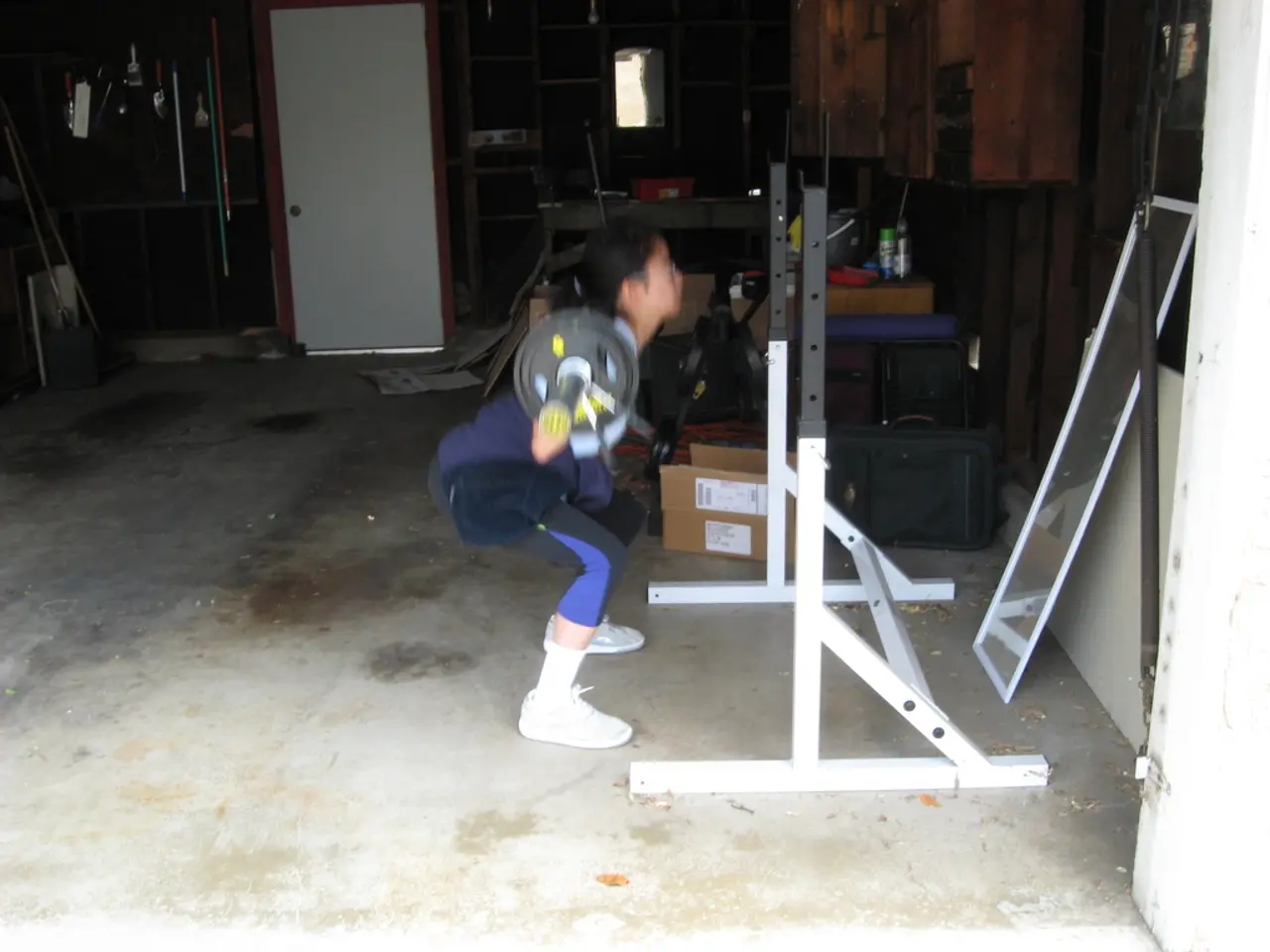Alterations in Squat Exercises for Enhanced Fitness Routine
### Title: Unleashing the Power of Squat Variations: A Comprehensive Guide
In the realm of fitness, squats are a cornerstone exercise, offering a multitude of benefits and catering to various fitness levels and goals. This article delves into the unique advantages and potential precautions associated with various squat variations, providing a roadmap for an effective and safe workout repertoire.
#### Heel-Elevated Squats
Heel-elevated squats, by increasing squat depth and shifting more force to the quadriceps, are beneficial for those needing extra quad strengthening. However, elevation reduces ankle mobility and increases knee range of motion, potentially causing knee pain, especially if form is improper or if there are previous injuries. Mobility work for ankles should be included to mitigate risks.
#### Bodyweight (or High-Repetition) Squats
Performing squats daily or in high repetitions can improve strength, flexibility, posture, and bone density, supporting bone health and reducing osteoporosis risk. High-rep squats also enhance full range of motion at hips, knees, and ankles, increasing flexibility. However, avoid excessive volume without rest, especially for beginners or those with joint issues to prevent overuse injuries.
#### Unilateral Squats and Lunge Variations (e.g., Forward and Reverse Lunges)
Unilateral squats and lunge variations help address muscular imbalances and bilateral deficits. Forward lunges are easier for beginners and allow weighted variations, while reverse lunges reduce load and stress on the knee joint, making them suitable for those with knee pain. Maintain proper knee alignment and control during lunges to avoid instability or stress on knees and hips.
#### Squats During Pregnancy
Safe squat variations can help strengthen pelvic floor and leg muscles, important during pregnancy. Form and modifications should be carefully monitored to ensure safety, avoiding excessive impact or strain.
#### Fitness Professionals Provide Personalized Guidance
Fitness professionals assess client's goals, current strength, mobility (ankles, hips, knees), and injury history, before providing tailored guidance. Technique coaching, mobility programs, progressive programming, precautionary monitoring, and customization are crucial components of this process, ensuring a workout program that supports long-term progress and injury prevention.
#### Choosing the Right Squat Variation
The choice of squat variation depends on individual goals and fitness level. For instance, sumo squats are more comfortable for people with limited hip mobility or tight hip flexors, but require adequate flexibility in the hips and ankles.
Warming up before squatting is crucial to increase blood flow to your muscles and joints, and to prepare your body for the workout ahead.
By combining the benefits of specific squat variations and anticipating the unique precautions, a fitness professional can tailor an effective, safe, and diversified squat-based workout program that supports long-term progress and injury prevention.
Health-and-wellness professionals emphasize the importance of considering bone health when incorporating high-repetition squats into one's fitness routine, as they can enhance posture, bone density, and flexibility, and reduce the risk of osteoporosis. Science also supports the use of squat variations to address muscular imbalances and bilateral deficits, as unilateral squats and lunge variations can help correct such issues and improve overall fitness.




